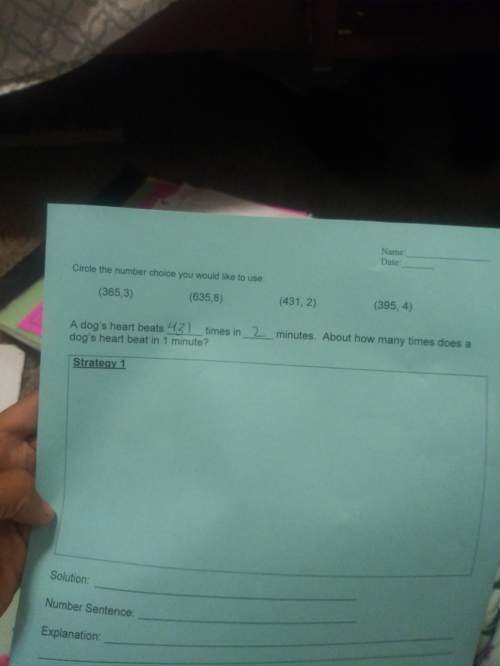

Answers: 2


Another question on Physics

Physics, 22.06.2019 00:30
Part f - example: finding two forces (part i) two dimensional dynamics often involves solving for two unknown quantities in two separate equations describing the total force. the block in (figure 1) has a mass m=10kg and is being pulled by a force f on a table with coefficient of static friction îľs=0.3. four forces act on it: the applied force f (directed î¸=30â above the horizontal). the force of gravity fg=mg (directly down, where g=9.8m/s2). the normal force n (directly up). the force of static friction fs (directly left, opposing any potential motion). if we want to find the size of the force necessary to just barely overcome static friction (in which case fs=îľsn), we use the condition that the sum of the forces in both directions must be 0. using some basic trigonometry, we can write this condition out for the forces in both the horizontal and vertical directions, respectively, as: fcosî¸â’îľsn=0 fsinî¸+nâ’mg=0 in order to find the magnitude of force f, we have to solve a system of two equations with both f and the normal force n unknown. use the methods we have learned to find an expression for f in terms of m, g, î¸, and îľs (no n).
Answers: 2

Physics, 22.06.2019 15:00
Astudent throws a water balloon with speed v0 from a height h = 1.76 m at an angle θ = 21° above the horizontal toward a target on the ground. the target is located a horizontal distance d = 9.5 m from the student’s feet. assume that the balloon moves without air resistance. use a cartesian coordinate system with the origin at the balloon's initial position. (a) what is the position vector, rtarge t, that originates from the balloon's original position and terminates at the target? put this in terms of h and d, and represent it as a vector using i and j. (b) in terms of the variables in the problem, determine the time, t, after the launch it takes the balloon to reach the target. your answer should not include h. (c) create an expression for the balloon's vertical position as a function of time, y(t), in terms of t, vo, g, and θ. (d) determine the magnitude of the balloon's initial velocity, v0, in meters per second, by eliminating t from the previous two expressions.
Answers: 3

Physics, 22.06.2019 17:30
Convection currents are caused by differences in what two things?
Answers: 1

Physics, 23.06.2019 01:30
Which statements did both aristotle and ptolemy assume? check all that apply.
Answers: 1
You know the right answer?
At the end of a mission, a shuttle can return to earth and land like a(n) a. satellite. c. multistag...
Questions



Biology, 15.01.2020 02:31



Mathematics, 15.01.2020 02:31

Mathematics, 15.01.2020 02:31


Chemistry, 15.01.2020 02:31

English, 15.01.2020 02:31

Physics, 15.01.2020 02:31


Biology, 15.01.2020 02:31

Chemistry, 15.01.2020 02:31

Computers and Technology, 15.01.2020 02:31


English, 15.01.2020 02:31


English, 15.01.2020 02:31

Mathematics, 15.01.2020 02:31




